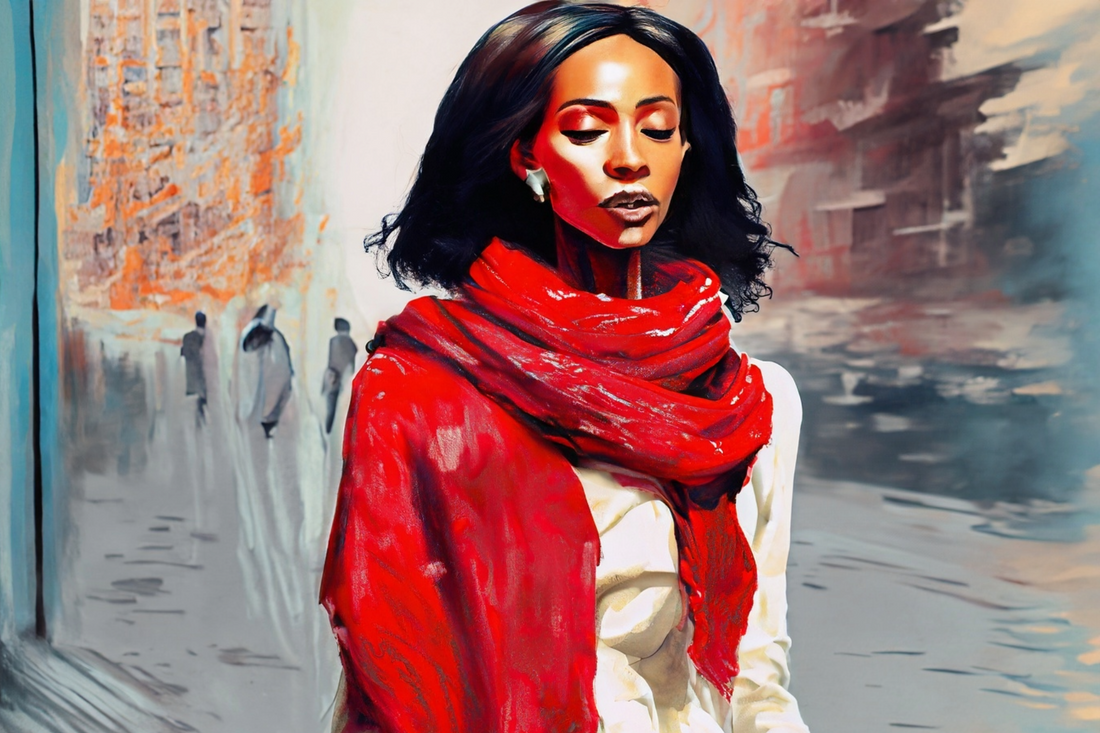Fashion continually evolves, presenting various cuts, fabrics, and style choices. However, handcrafted, pure cashmere pashmina shawls appeal irresistibly.
The appeal of pure cashmere handcrafted shawls is irresistible. They're not merely fashionable accessories but treasured family heirlooms passed down through generations. The passion invested by artisans in crafting each shawl makes it a beloved piece. Authentic pashminas are a blend of tradition and skilled craftsmanship.
What makes these shawls and stoles so unique?
The Creation of Pashmina Shawls
Did you know that pashmina shawls are made from the finest cashmere? This luxurious cashmere comes from special goats, mainly the Changthangi (Kashmiri Pashmina) goats, resulting in an incredibly soft and silky texture. The Kashmiri goat has been highly valued for making these shawls, making up only 0.1% of global cashmere production.

Today, the term "pashmina" refers to the material and the type of Kashmir shawl made from it. While many pashmina shawls are spun from the fibre of Kashmiri goats, exceptional quality ones are crafted from the rarest and finest form of cashmere, known as "wild cashmere". This precious material is sourced from the delicate down of Ibex found in the Himalayan foothills. What sets this fibre apart is its incredibly thin diameter of only 13-15 microns, even finer than the standard cashmere commonly used, with an average diameter of 15-19 microns. To give you context, human hair has a diameter of 50-70 microns, underscoring this extraordinary material's delicate and luxurious nature, also referred to as Yangir.
The journey of pashmina begins in the foothills of the Himalayas, where herds of goats roam. Creating Pashmina involves hand combing, collecting and sorting the wool, and spinning it into yarn. The weaving process relies on traditional techniques used for centuries, and the final product may or may not include hand embroidery. The finished scarves, stoles, or shawls reflect countless hours of dedicated craftsmanship. For example, producing a pashmina stole takes an average of 180 hours.
A Rich Historical Tapestry
Pashmina has been a sought-after luxury in the courts of South Asian kings. It adorned not only the queens and princesses, displaying their power and extravagant wardrobes but also the kings, who wore this opulent fibre in their robes and shawls.
The story of pashmina as a revered textile begins in the ancient civilisations that flourished in the Indus Valley and Tibet. Yet, it was in 15th-century Kashmir where pashmina truly found its form and identity. Under the reign of Zayn-ul-Abidin, the craft was revitalised and transformed into the intricate artistry we recognise today. This cultural renaissance received a significant boost during the era of the Mughal rulers, who became ardent patrons of this unique craft. Consequently, Srinagar in India has become a bustling centre of pashmina production, home to artisans whose skills have been honed through generations.
This artistic tradition extends beyond Srinagar, reaching the rugged landscapes of the Himalayas in Pakistan and Nepal. These regions host thriving manufacturing that creates various types of pashmina stoles. The Himalayan pashmina belt plays a significant role in shaping the fabric's essence and preserving its heritage. This rich historical tapestry and its timeless charm keep pashmina in the global fashion spotlight.
During the 20th century, demand for pashmina dipped due to synthetic fibres and instability in Kashmir. However, traditional Pashmina making saw a revival as people embraced traditional craftsmanship and sustainable practices, merging them with modern style. This resurgence firmly established pashmina within the global fashion scene.
The Versatile Statement Pieces
In South Asian culture, family gatherings are not just ordinary events but joyous celebrations. During the winter, these occasions also serve as an opportunity to showcase creative fashion.
Pashmina shawls, known for their vibrant colours and intricate designs, have become essential to South Asian winter fashion. Wearing a Kashmiri pashmina shawl goes beyond keeping warm; it represents embracing a luxurious and elegant look, making a stunning impression at any gathering. It's not just a fashion accessory; it's a statement of personal style and sophistication.
The popularity of pashmina extends beyond South Asia, resonating with people worldwide for its timeless elegance and soft texture. It has captured the hearts of fashion enthusiasts, actors, and influencers around the globe. Versatile and stylish, it complements various outfits, adding warmth and sophistication. Its appeal also extends to conscious consumers who appreciate its sustainable production methods.
Pashmina shawls are narrators of a rich history that spans across the Himalayas—from the skilled artisans in Srinagar and the untouched beauty of the Gace Valley in Pakistani Kashmir to the masterful hands at work in Kathmandu. Each region contributes its unique flair to this age-old craft. Weaving a tapestry of culture, craftsmanship, and heritage that is as diverse as it is unified.


